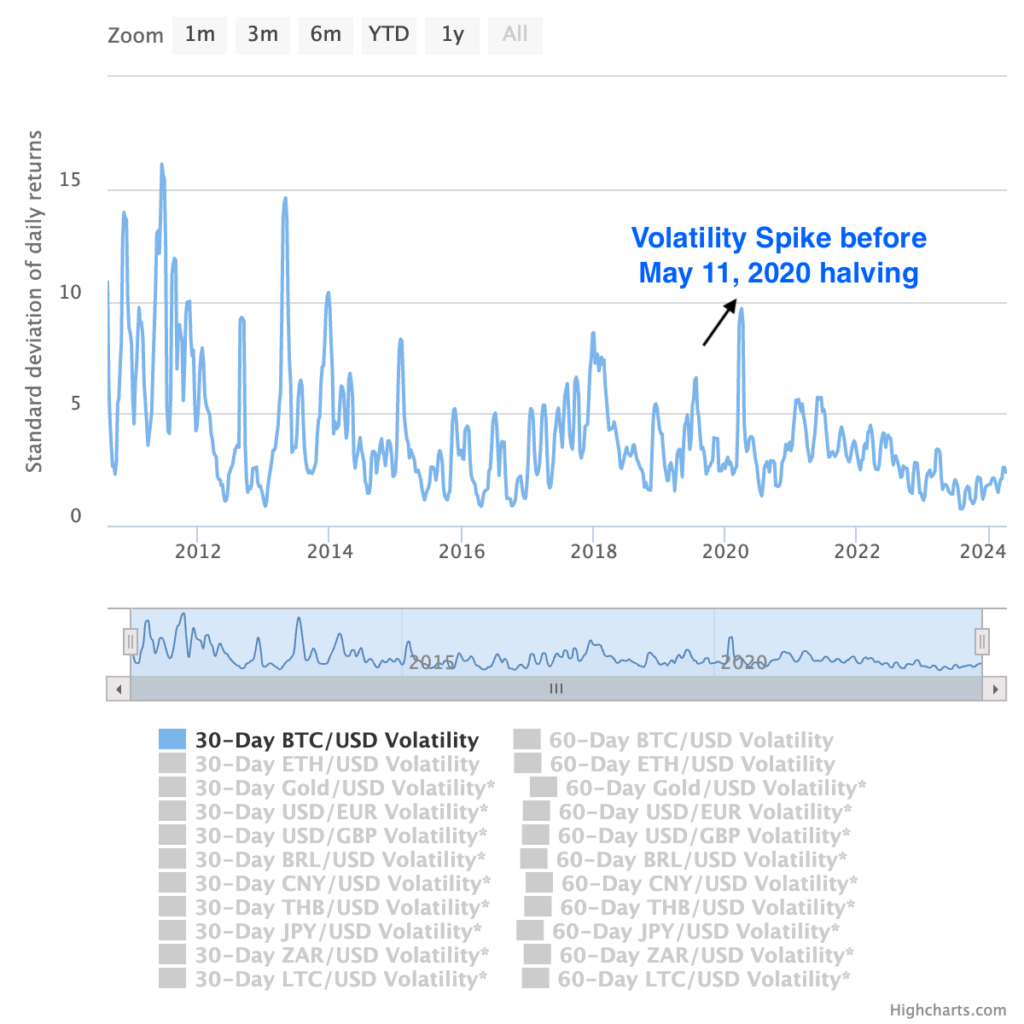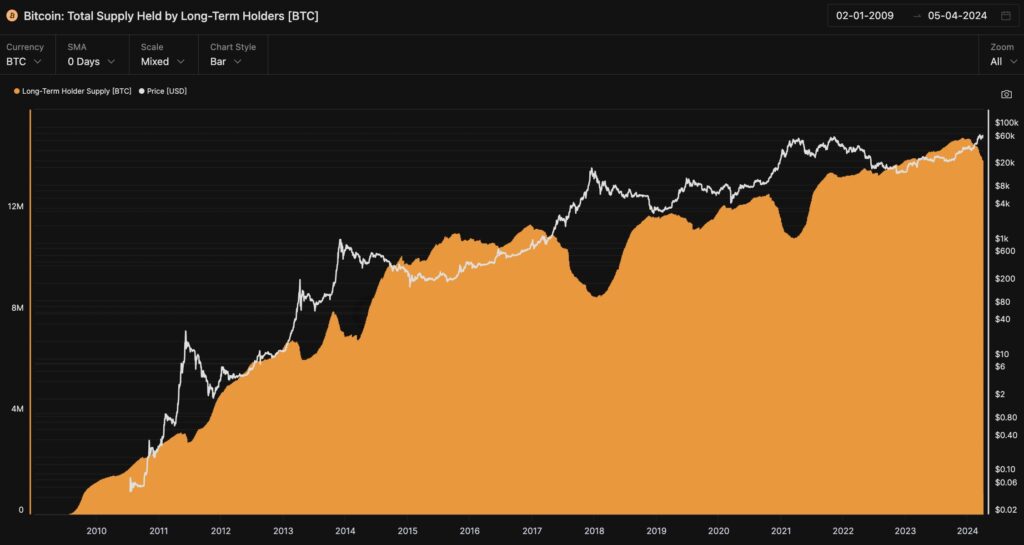
YEREVAN (CoinChapter.com) — Bitcoin’s volatility has dropped from nearly 18% in April 2013 to about 4% over the last month, mirroring the stability of traditional equities. The crypto community is abuzz with the highly anticipated Bitcoin halving event, drawing near amid growing ETF interest. This imminent event, just weeks away, necessitates adopting new trading strategies in a market evolving distinctly from the past.
Is Bitcoin’s Wild Ride Smoothing Out? Unpacking the Latest Halving Cycle
In the last three cycles, Bitcoin’s halving events have typically triggered a significant increase in volatility. Traditionally, we’d see a sell-off between 30% and 40%, which sets the stage for a meteoric ascent to new all-time highs, usually within an average of 480 days following the halving.

However, this cycle presents a new twist with the introduction of the spot Bitcoin ETF, fundamentally altering the landscape.
To predict Bitcoin’s future price movements, closely examining its volatility is key. In the months leading up to the halving, we’ve observed expected drawdowns as excitement builds. However, compared to previous cycles, these drawdowns have been mild.
Bitcoin’s corrections have been notably shallower this time, not surpassing 25%. Remarkably, the most recent drawdown was just about 15% before Bitcoin rebounded, approaching the $70,000 milestone.

Are 600% Bitcoin Halving Returns Possible in 2024?
The more subdued sell-off suggests a gentler rally once we’ve moved past the halving event. While it’s almost certain that Bitcoin will experience the customary post-halving sell-off and will indeed climb to new all-time highs, the scale of returns is set to change.
Compared to traditional equities, Bitcoin’s returns will still likely be more appealing. However, the days of seeing price surges exceeding 600%, like those witnessed after the 2020 halving, are likely behind us.

The pronounced shift in behavior within the Bitcoin market can be significantly attributed to the introduction of the spot Bitcoin ETF. This development has fundamentally altered the supply dynamics.
Currently, ETFs are absorbing more BTC from the market than what miners can produce. On average, spot BTC ETFs have acquired roughly 10,000 BTC per day since their inception. This figure starkly contrasts with the 900 new BTC that miners generate daily.
Such a disparity intensifies Bitcoin’s scarcity, inevitably exerting upward pressure on its price.
Has Stability Become the New Normal?
Indeed, the emergence of spot Bitcoin ETFs has influenced the market’s supply dynamics and significantly impacted its volatility.
ETF investors tend to have a more long-term perspective than the average crypto trader, which considerably reduces long-term volatility. Even though there’s been a recent uptick in volatility as the halving event nears, it’s still much lower than the levels experienced during previous halvings.
According to CoinGlass data, the 30-day historical volatility of BTC/USD has plummeted from nearly 18% in April 2013 to around 4%. This level of volatility is more reminiscent of what you’d expect from a U.S. equity fund, not a cryptocurrency price chart, highlighting a significant shift like Bitcoin’s market.

The shift towards lower volatility in the Bitcoin market is largely due to the type of investors now entering through spot Bitcoin ETFs. These are the same “mom-and-pop” investors and institutions that have invested trillions of dollars into S&P 500 ETFs.
Long-term holders typically have an investment horizon of at least three years. Their buy or sell decisions are influenced by factors that have a more enduring impact, such as macroeconomic conditions, structural changes in the market, and the long-term potential for returns. This investor profile brings a steadier hand to the market, prioritizing long-term growth and stability over short-term gains, contributing to the reduced volatility seen in Bitcoin.
The landscape has fundamentally shifted for investors looking to capitalize on Bitcoin’s halving. They’ll need to adopt a mindset more akin to that of traditional equity investors than the typical crypto enthusiast.
It is vital to pay close attention to the actions of long-term holders, who have become the primary drivers of the market’s direction. Adapting to this new environment means embracing a more measured and research-driven approach to investing in Bitcoin, focusing on long-term trends and stability over short-term volatility and gains.
Redefining Bitcoin Gains: Are We Entering an Era of Sustainable Growth?
Investors aiming for the spectacular 600% returns of past Bitcoin cycles must adjust their expectations. Such outcomes are unlikely to follow this halving event. Instead, the trade-off will be a steadier and more reliable return pattern.
Bitcoin’s evolution into a more stable asset aligns it with traditional investments, reducing volatility and making it an appealing choice for diversified portfolios. This transition from a high-risk, high-reward dynamic to a predictably growing asset broadens its appeal among investors looking for steady growth within a balanced investment approach.


